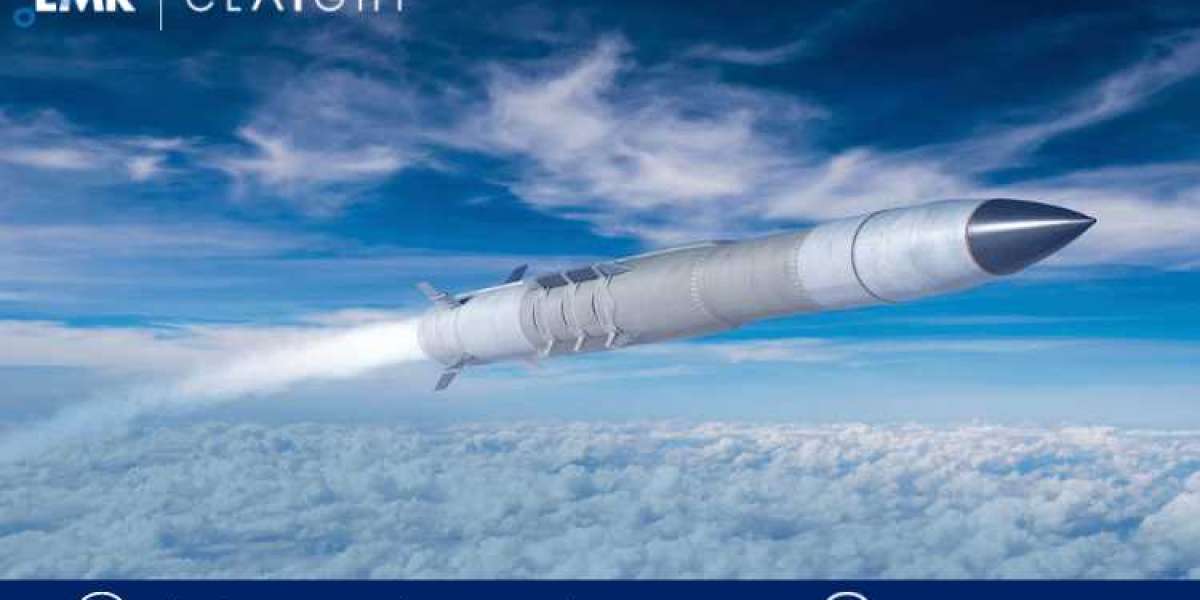According to the report by Expert Market Research (EMR), the global interceptor missiles market is projected to grow at a CAGR of 9% between 2024 and 2032. Driven by escalating geopolitical tensions, advancements in missile technology, and increasing defense budgets across various nations, the market is expected to witness significant expansion by 2032.
Interceptor missiles are a crucial component of a nation's defense mechanism, designed to detect, track, and destroy incoming ballistic missiles and other aerial threats. They serve as a pivotal element in maintaining national security and deterrence capabilities, ensuring a nation's ability to defend itself against potential attacks. These missiles are integrated into sophisticated defense systems, including Ground-based Midcourse Defense (GMD), Aegis Ballistic Missile Defense (BMD), and Terminal High Altitude Area Defense (THAAD).
The surge in missile threats, particularly from rogue states and non-state actors, has intensified the demand for reliable interceptor missile systems. The modernization of existing defense infrastructure and the development of next-generation missile defense systems are key factors contributing to the interceptor missiles market growth. Additionally, the rise in defense spending by emerging economies, coupled with technological advancements in missile guidance, propulsion, and targeting systems, is expected to propel the market forward.
Moreover, collaborations and joint ventures between defense contractors and government bodies are further boosting the development and deployment of advanced interceptor missile systems. The strategic importance of these missiles in maintaining regional and global stability underscores the necessity for continuous innovation and investment in this sector.
Get a Free Sample Report with Table of Contents: https://www.expertmarketresearch.com/reports/interceptor-missiles-market/requestsample
Market Segmentation
The interceptor missiles market can be segmented based on type, range, platform, and region.
Market Breakup by Type
- Endoatmospheric Missiles
- Exoatmospheric Missiles
Market Breakup by Range
- Short-Range Missiles
- Medium-Range Missiles
- Long-Range Missiles
Market Breakup by Platform
- Land-Based Systems
- Sea-Based Systems
- Air-Based Systems
Market Breakup by Region
- North America
- Europe
- Asia Pacific
- Latin America
- Middle East and Africa
Read Full Report with Table of Contents: https://www.expertmarketresearch.com/reports/interceptor-missiles-market
Key Market Drivers
- Increasing Geopolitical Tensions: The growing hostilities and uncertainties in regions such as the Middle East, Asia Pacific, and Eastern Europe are leading nations to bolster their missile defense capabilities.
- Technological Advancements: Innovations in missile technologies, such as hypersonic propulsion, advanced guidance systems, and improved interception capabilities, are driving the development and deployment of more effective interceptor missiles.
- Rising Defense Budgets: With increasing defense expenditures, particularly in emerging economies, there is a heightened focus on strengthening missile defense systems, thus fueling market growth.
- Modernization Programs: Ongoing modernization programs aimed at upgrading existing missile defense infrastructures and integrating new technologies are significantly contributing to market expansion.
- Collaborations and Alliances: Strategic partnerships between leading defense contractors and government bodies are facilitating the development of cutting-edge interceptor missile systems, enhancing their market presence.
Competitive Landscape
The EMR report delves into the market shares, capacities, investments, mergers, and acquisitions of the leading companies operating in the global interceptor missiles market. Some of the major players explored in the report include:
- Raytheon Technologies Corporation
- Lockheed Martin Corporation
- Northrop Grumman Corporation
- Boeing Company
- BAE Systems
- Thales Group
- MBDA
- Rafael Advanced Defense Systems
- DRDO (Defence Research and Development Organisation)
- SAAB AB
These companies are at the forefront of technological advancements and are heavily investing in research and development to enhance their interceptor missile offerings. Collaborations with defense agencies and international governments further solidify their market position.
Technological Trends
The interceptor missiles market is witnessing several technological trends that are shaping its future trajectory. Key trends include:
- Hypersonic Interceptor Missiles: The development of hypersonic interceptor missiles capable of traveling at speeds exceeding Mach 5, offering enhanced interception capabilities against advanced threats.
- Directed Energy Weapons: Integration of directed energy weapons, such as high-energy lasers, into missile defense systems to provide rapid and precise interception of incoming threats.
- AI and Machine Learning: Utilization of artificial intelligence and machine learning algorithms to improve target detection, tracking, and engagement accuracy.
- Advanced Materials: Use of advanced materials to enhance missile performance, including lightweight composites for improved maneuverability and heat-resistant materials for hypersonic applications.
- Network-Centric Warfare: Implementation of network-centric warfare concepts to enable seamless communication and coordination between various missile defense assets, ensuring a more integrated and responsive defense system.
Explore More:
Apparel, Accessories, and Footwear Market
Regional Insights
North America
North America, particularly the United States, is expected to dominate the interceptor missiles market due to substantial defense spending and the presence of leading defense contractors. The region's focus on modernizing its missile defense systems and developing next-generation technologies is a significant growth driver.
Europe
Europe is anticipated to witness considerable growth, driven by increasing defense budgets and collaborative defense initiatives among European Union member states. The geopolitical tensions in Eastern Europe are also prompting countries to enhance their missile defense capabilities.
Asia Pacific
The Asia Pacific region is projected to experience robust growth, fueled by rising defense expenditures in countries like China, India, Japan, and South Korea. The regional focus on countering missile threats and enhancing strategic deterrence is propelling the market forward.
Latin America
Latin America is expected to show moderate growth, with countries investing in missile defense systems to address emerging security challenges. Regional collaborations and international partnerships are likely to drive market expansion.
Middle East and Africa
The Middle East and Africa are anticipated to witness significant growth due to the ongoing conflicts and security concerns in the region. Countries are increasingly investing in missile defense systems to protect critical infrastructure and ensure national security.
The global interceptor missiles market is poised for substantial growth between 2024 and 2032, driven by escalating geopolitical tensions, technological advancements, and increasing defense budgets. As nations prioritize enhancing their missile defense capabilities, the demand for advanced interceptor missile systems is expected to surge. Key market players are focusing on innovation and strategic collaborations to maintain a competitive edge, ensuring robust market expansion in the coming years. By addressing emerging threats and leveraging cutting-edge technologies, the interceptor missiles market is set to play a pivotal role in global defense strategies.








